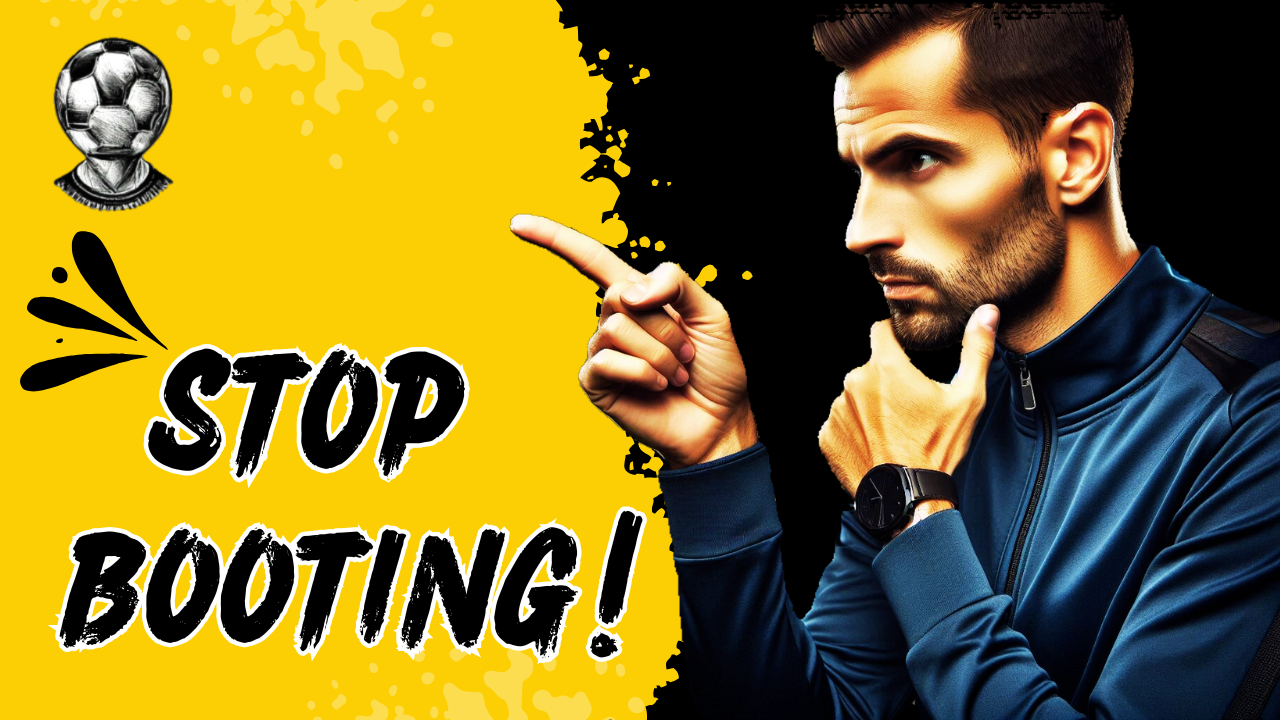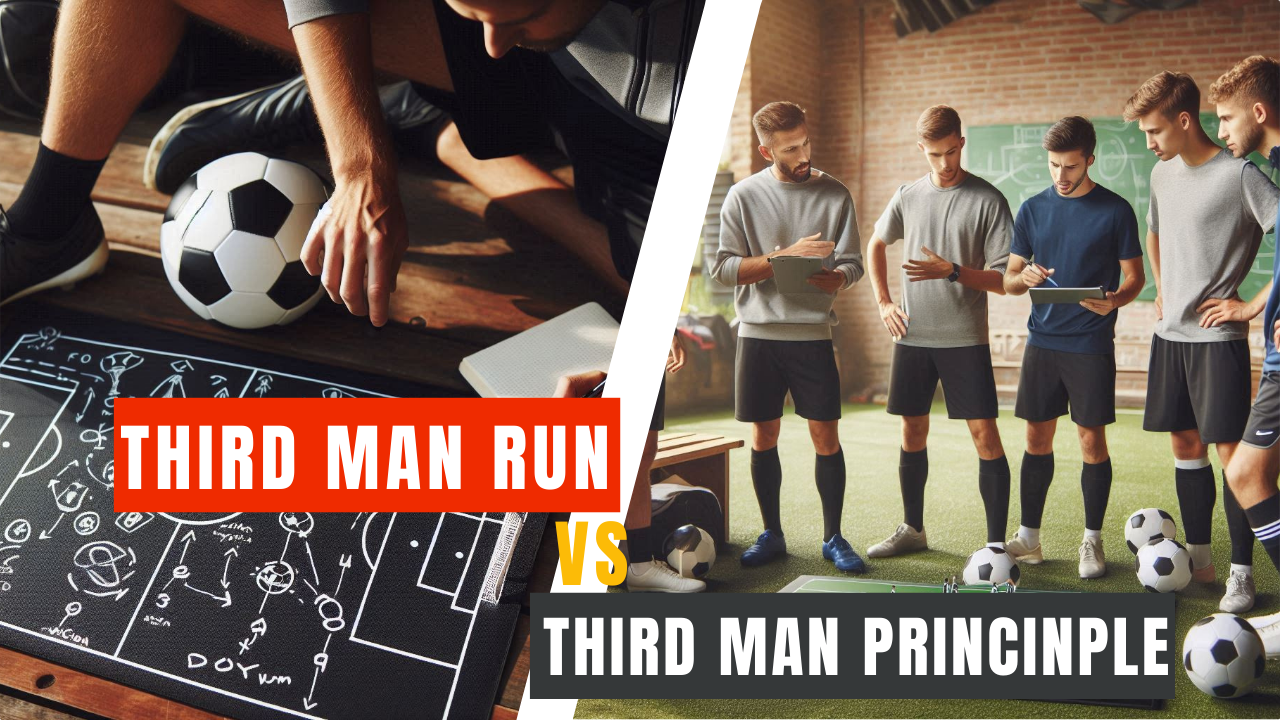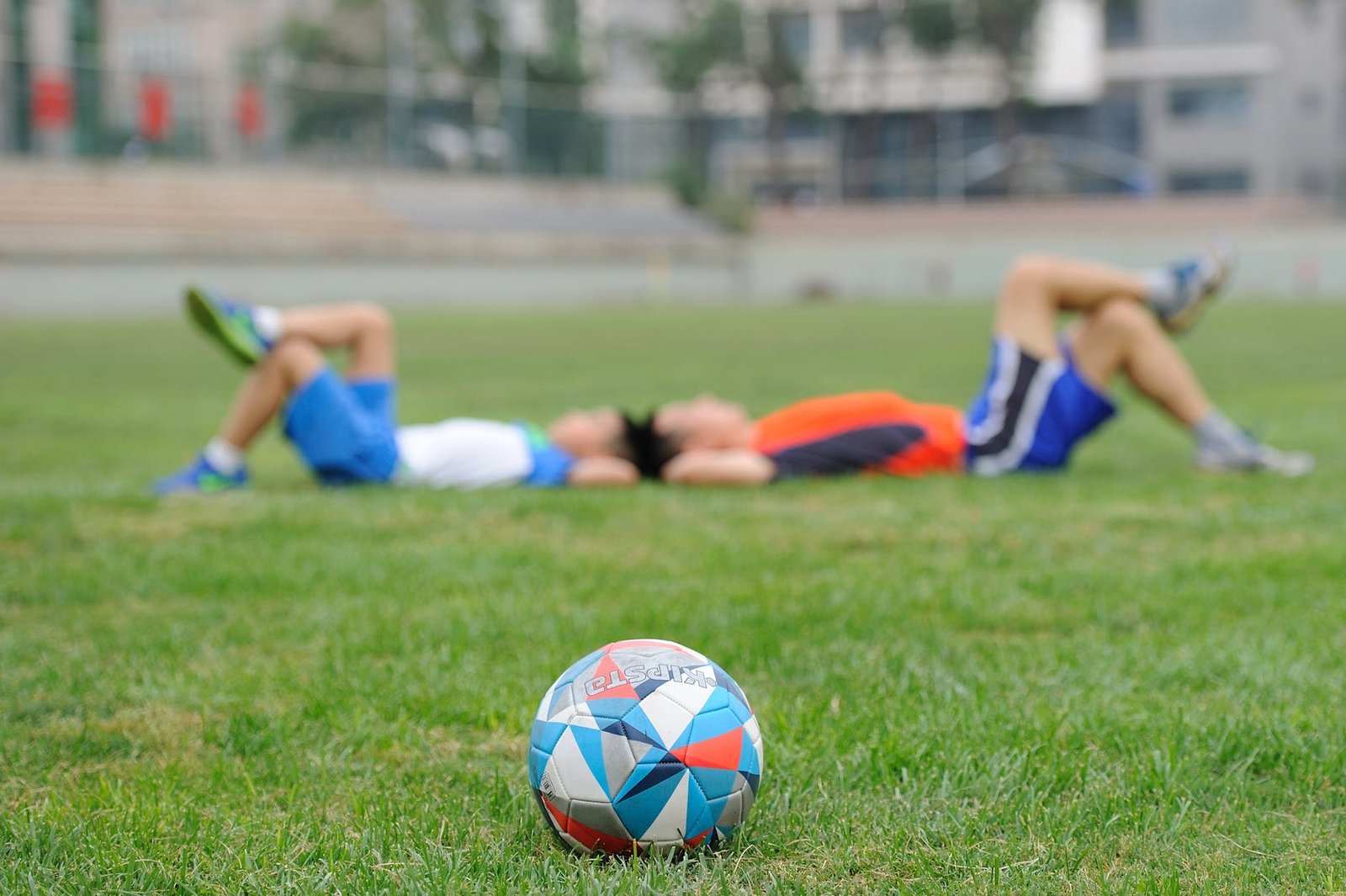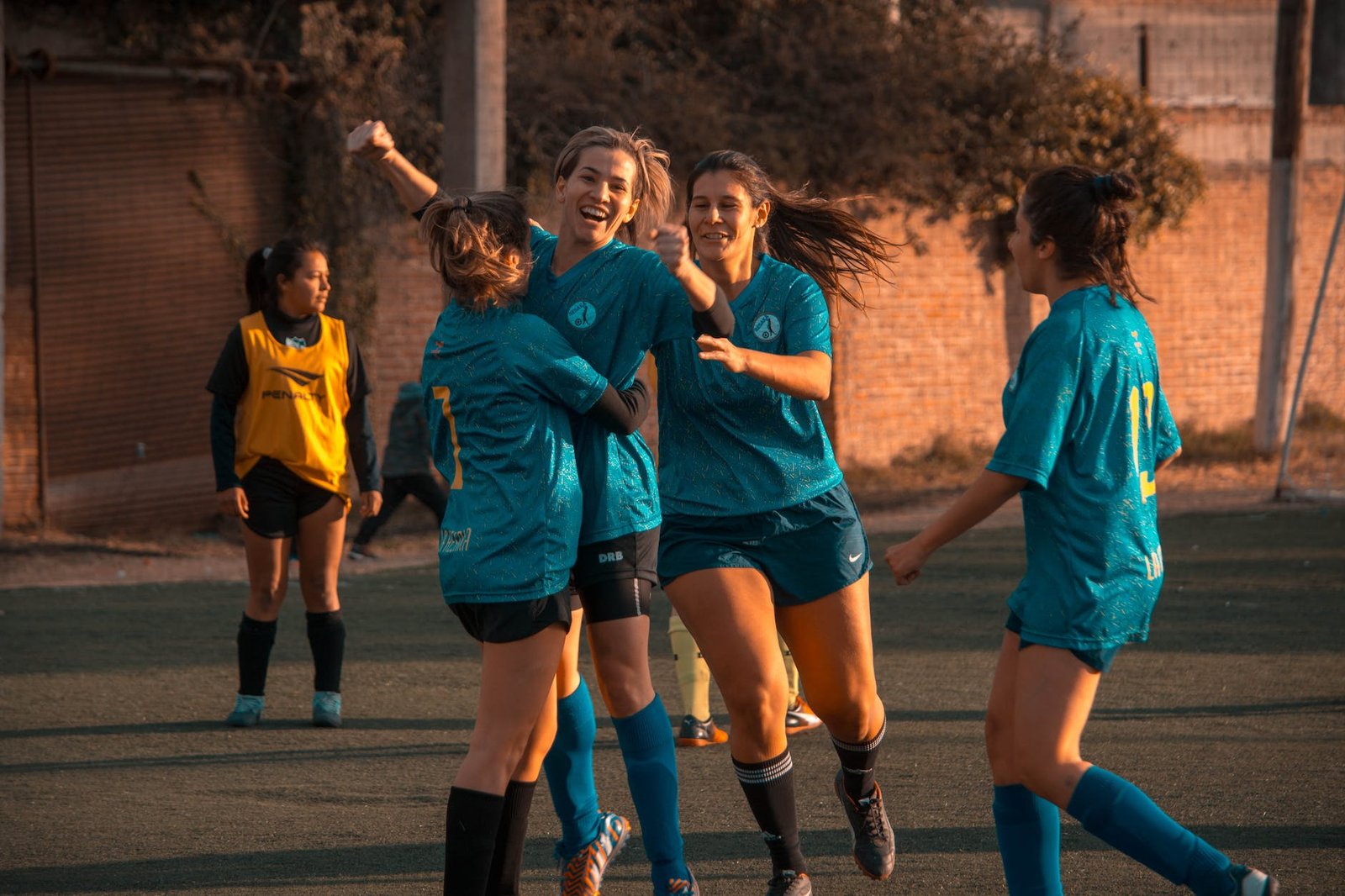Everything You Need to Know About Crossing in Soccer
Crossing in soccer is one of the oldest and most effective ways of creating chances. Whether it’s a low ball whipped across the box, a deep delivery to the far post, or a clever cutback, the cross is often the moment that separates average teams from dangerous ones.
In this video, we’ll break down everything you need to know about crossing — from the perspective of the attacker delivering the ball, the different types of runs attackers should make, how defenders should deal with it, and how to train these situations at every age group. As always, there will be drills I recommend for practicing at various levels and age groups.
Part 1: The Role of the Crosser
When we talk about crossing, the starting point is always the player on the ball — the crosser. As every player action in soccer, there are three elements we need to consider – the scanning, the decision and the execution.
Scanning – Crossing in Soccer
Let’s start with the scanning. There are two key factors for the crosser, firstly is where the teammates can be by the time the ball is delivered. Notice that I talked about where the players can be, not where the players are. The crosser should have several glances of the field. That way they can see both the snapshot of the current position, but also the movie of the momentum of the players. We are looking at the empty spaces and where the players are running into, not just where we saw them last.
Opposition – Crossing in Soccer
The second factor is the opposition. And on the opposition, the most important player is the closest player to the ball. One of the best players of all time when it comes to crossing is David Beckham. While he was not the fastest or had much skills to dribble, he had to key moves. Firstly, he could sell a fake cross to actually create space for himself to actually cross the ball on the next touch. Secondly, he would use one of his teammates in a one-two move and deliver a cross with first touch.
Decision Making – Crossing in Soccer
The decision making comes with experience and is naturally linked with both the scanning and the execution capabilities. If a player doesn’t scan on the second post, then they will never attempt to deliver a ball there. And why are they not scanning the second post? Maybe because they are not good at scanning, but maybe because their execution technique is not good enough to even try that, so they already have decided against that option. Remember, the best cross is the one that matches your teammate’s run — not the one you are most comfortable or the most spectacular one.
Execution – Crossing in Soccer
Finally, the execution is about repetition and practice. You need to open your hips, approach the ball at an angle and keep your head steady when striking. The mechanics such as the exact position where you plant the supporting foot and where you strike the ball are different depending on whether you’re going for a driven low ball or a floated one. However, you need to get comfortable with 4 basic executions.
First post
If you notice your striker winning a run on the first post, you have to be able to deliver a simple ball there. It’s the closes to you and because of that you can pick different technique for a last moment adjustment of the shot. Note that if you deliver it with high velocity, then the striker doesn’t need to shoot, but it needs only a touch to guide the ball to the goal.
Second post
This can be harder because it’s longer distance. Note that usually you would hit the ball at an angle with the inside of the foot. For example, a right footed right winger delivers this ball on the second post for the left winger that is making a run. The ball will curve away from the goalkeeper and often go around the defenders that are between the goalkeeper and the attacking players.
Low ball or bouncing ball
The target here is very clear, which is for our teammate to just touch the ball and guide it into the goal. The ball will be fast and hard to control. Defenders might also struggle when a ball like this is delivered, because they need to clear it and make sure that they don’t score an own goal or kick it into a teammate or an opponent. When the ball is fast and unpredictable, it can be harder than it looks, so we see often comical own goals.
Cut back
Last but not least. The cut back cross is a signature move of intelligent players. The crosser needs to see the runner, but also the receiver must be patient and smart enough to allow both the teammates and the opponents to anticipate balls on the first and second post, and vacate the space for the cutback to work. One important thing about the crosser – the body position should still signal that the ball will be delivered on the first or the second post. It’s essentially a fake, a misdirection for the defenders, in order to sell this move.
Part 2: Runs in the Box
Crossing only works if attackers make intelligent runs. The most important thing we are looking for when making runs is to identify the empty space that we can run into. It’s less of a picture and more of a movie – we are looking few frames ahead where the player can be and where the ball should be delivered. There is a moment right before the player with the ball looks up to see where the ball should be crossed. That’s the moment when the runner should change direction and pace, so it shows where the cross should come in. Let’s break down the three most common runs:
First Post Run
People often complain that we don’t have too many classic strikers anymore. The classic striker does the first post run and gets to the ball first. The true striker instinct is to get to the ball first. They can striker with their foot or it might be a header, but they have to get to the ball first, often including physical contact with the defender. The striker’s run is often straight through the middle. Then at one moment the striker needs to change direction and sprint to get in front of the defender. That special moment is when the striker notices that the crosser is ready to cross and has lifted their head up, so the striker starts that sprint to signal to the crosser where to get the ball.
Second Post Run
The second post run is actually more interesting. It can be the striker, but more often the opposite winger or late-arriving midfielder. The run often has two phases. First step is to stretch the defense by running further from the ball. The second step is to run into the ball when it’s crossed, often opposite from the first run. The defender won’t have this momentum and would be relatively static, so the runner can get to the ball first.
Cutback Zone Run
We briefly touched on this earlier when talking about the crosser role. Let’s look a bit more from the runner point of view. The two important parts of this run are the empty space and the timing of the run. The empty space is created both by the attacking players who run on the first and the second post. If the striker didn’t make the first post run, both the striker and the defender will occupy the space where the cutback pass should happen. Same goes for the opposite winger on the second post.
The second important point is that there has to be a run with a change of direction and pace. If the run is by an attacking midfielder, it goes from outside the penalty box, towards the penalty spot. If the run is by the opposite winger, it will have a dummy run to the second post, then cut back towards the penalty spot. We are talking about the penalty spot, but what we are really looking for is the area between the two defensive lines – the defenders and the midfielders. The holding midfielder often drops back to help the defenders, which leaves the area wide open.
Part 3: Momentum when Crossing in Soccer
Together, these three runs force defenders to cover the entire width of the box — making it much harder to defend. I want to make one more point and that is about the momentum. There are essentially three general states – players running towards goal, standing still, running back.
Counterattacking
Say there is a counterattack and our winger has the ball. Both the attackers and the defenders are running towards the goal. All types of crosses can work in that case, but choosing the perfect one will depend on the situation. For example, if the players are outside of the box when I am crossing the ball, I will try a low cross, so that somebody can run into it and have a shot. If the players are closer to the goal, I will have to pick between crossing on the first and the second post. And if players are still running and hoping for a low cross in the 6 yard box, I will either do that or look for a cut back, because the attackers have moved the defensive line so low.
Stallemate
Now, let’s say I have failed to cross the ball for whatever reason, maybe my defender blocked me or simply prevented me from crossing the ball. My teammates have slowed down and stopped, same as the defenders. If I try to cross the ball at that point the teammates are outnumbered, have no momentum and some of them might be stuck in offside. Two factors can change this. Firstly, a good cross can fix that – either a very strong ball that bounces close to the goal, or a precise cross that will float above the heads of the defenders and land in front of a teammate. Secondly, the crosser is close to the goal line, then there is virtually no risk of offside. This is how corner kicks often look in a game.
Pullback
Finally, let’s assume that I have made a fake cross, then switched to my other foot and plan to cross. The result is that defenders are regrouping, starting to push up, creating an offside trap. Doing a cutback cross at this point is usually useless. Doing a regular cross usually results in an offside. The most important player here is the late runner who will aim to get the ball into space or at least break the offside trap. If you don’t have that runner, it is very hard to create anything against a good opponent. You often see at set pieces that the defenders push a high line with an offside trap, only to be broken by a late runner, not the usual suspects who are all caught in offside.
Part 4: Training Crossing in Soccer
How do you introduce this in training? Let’s go step by step:
- Ages 6–9 (No Heading, Simple Finishes)
Start with low, ground crosses. Drills: 3v1 in wide areas — winger crosses, striker finishes with the inside of the foot. The rule is that the winger must cross from wide, outside of something that will look like a penalty area. Focus on timing of the run rather than power.
- Ages 10–12 (Introduce Aerial Awareness, Still Minimal Heading)
Add bouncing crosses and whip. Players can start practicing attacking different zones of the box. Encourage players to recognize when to cut back vs. play across goal. At this age, cut back crosses will already work just fine. So really, the three options are low on first post, low on second post, and cut back. If the striker goes on first post, the second winger is ready for second post or cutback. If the striker waits, then the second winger makes the run.
- Ages 13+ (Introduce Heading, More Complex Patterns)
Now heading is not just legal, but also safe to introduce. Practice timing jumps and attacking the ball at its highest point. Add more defenders to simulate real game pressure. Drill: 4v2 crossing and finishing — one crosser, three attackers, two defenders, plus a goalkeeper.
- Advanced Level
Professional clubs today have dedicated coaches only for set pieces, which of course are just one aspect of crossing. The main thing in the advanced level is the flow and the timing. Things are executed at full sprint and things are coordinated, such as full-backs overlapping, midfielders arriving late, wingers rotating inside. There is wide crossing, but also crossing from half-spaces, trying different types of crosses, different kinds of runs and with different momentum.
Part 5: The Defensive Side of Crossing in Soccer
While this video focuses on attacking, you can’t talk about crossing without mentioning how to defend it.
- Goalkeeper
- Needs to command the box. Coming out for a cross can kill the danger before it even arrives, but it has to be well timed. The goalkeeper has to do the most communication and be the most vocal person in the box.
- Defenders
- Near-post defender must block the most dangerous run and don’t hesitate to kick it out for corner.
- Central defender takes the striker in front of goal and often should care more about not conceding, then intercepting the ball. What I am trying to say is that they must prevent the striker from getting the ball first and foremost. Let the other teammates worry about the ball.
- Far-post defender must tuck in but still be aware of the back-post run.
- Midfielders
- Track cutback zones. Many goals come from midfielders arriving late and unmarked. The holding midfielder might drop to help the defenders, but the other midfielders must get back and be disciplined when the team is defending. If not the cross, they will need to clear the second ball.
By sprinkling in defensive awareness while coaching crossing, players understand the balance of the game better.
The Magic of Crossing in Soccer
Crossing may look simple, but when done right, it’s one of the most powerful ways to break down defenses. The timing, the delivery, the finishing — they all have to work together.
If you found this breakdown helpful, check out my other videos on attacking movements and positioning. And if you coach or play, try some of these drills with your team — you’ll see how quickly crossing can become a real weapon.






